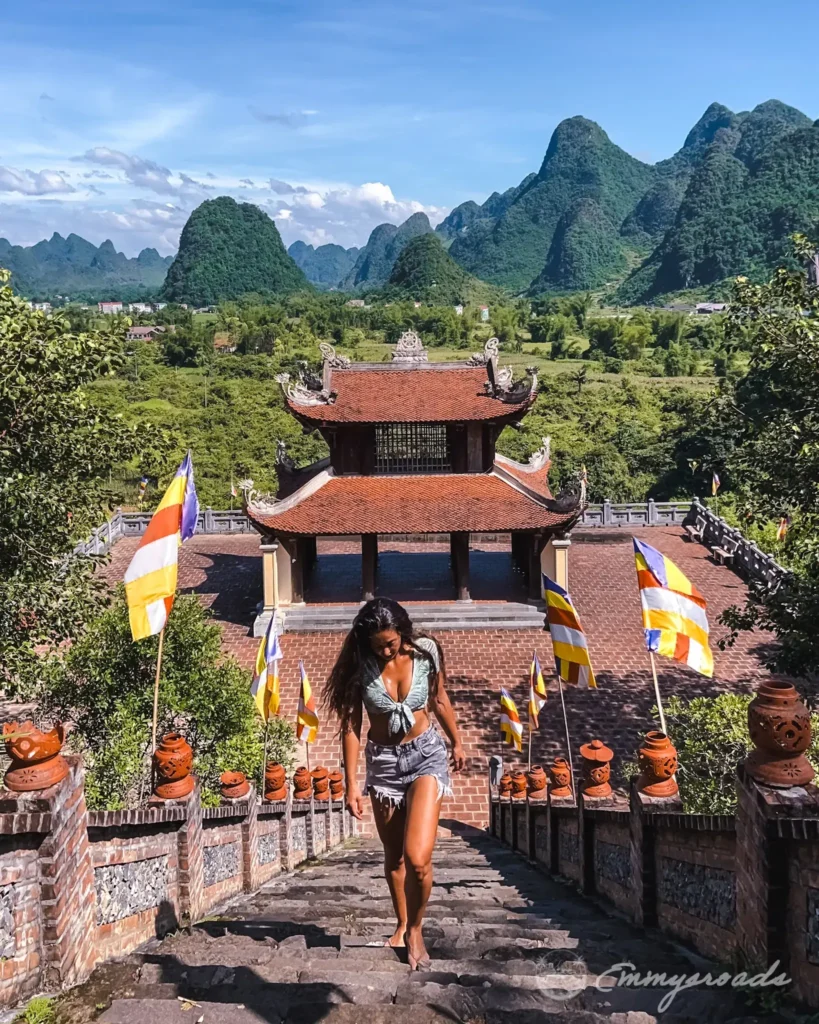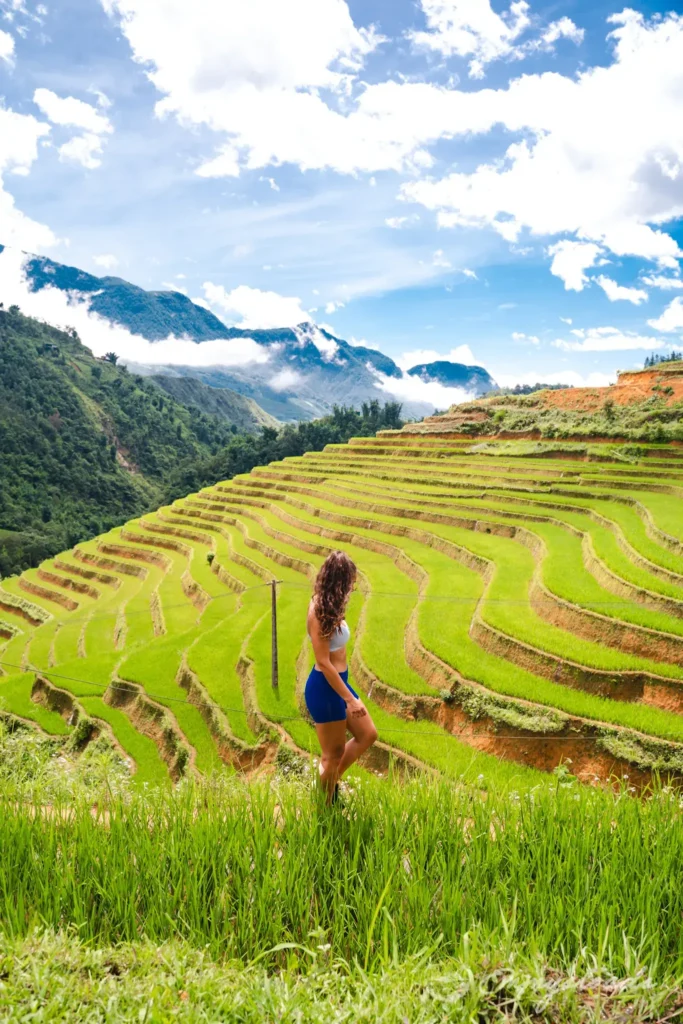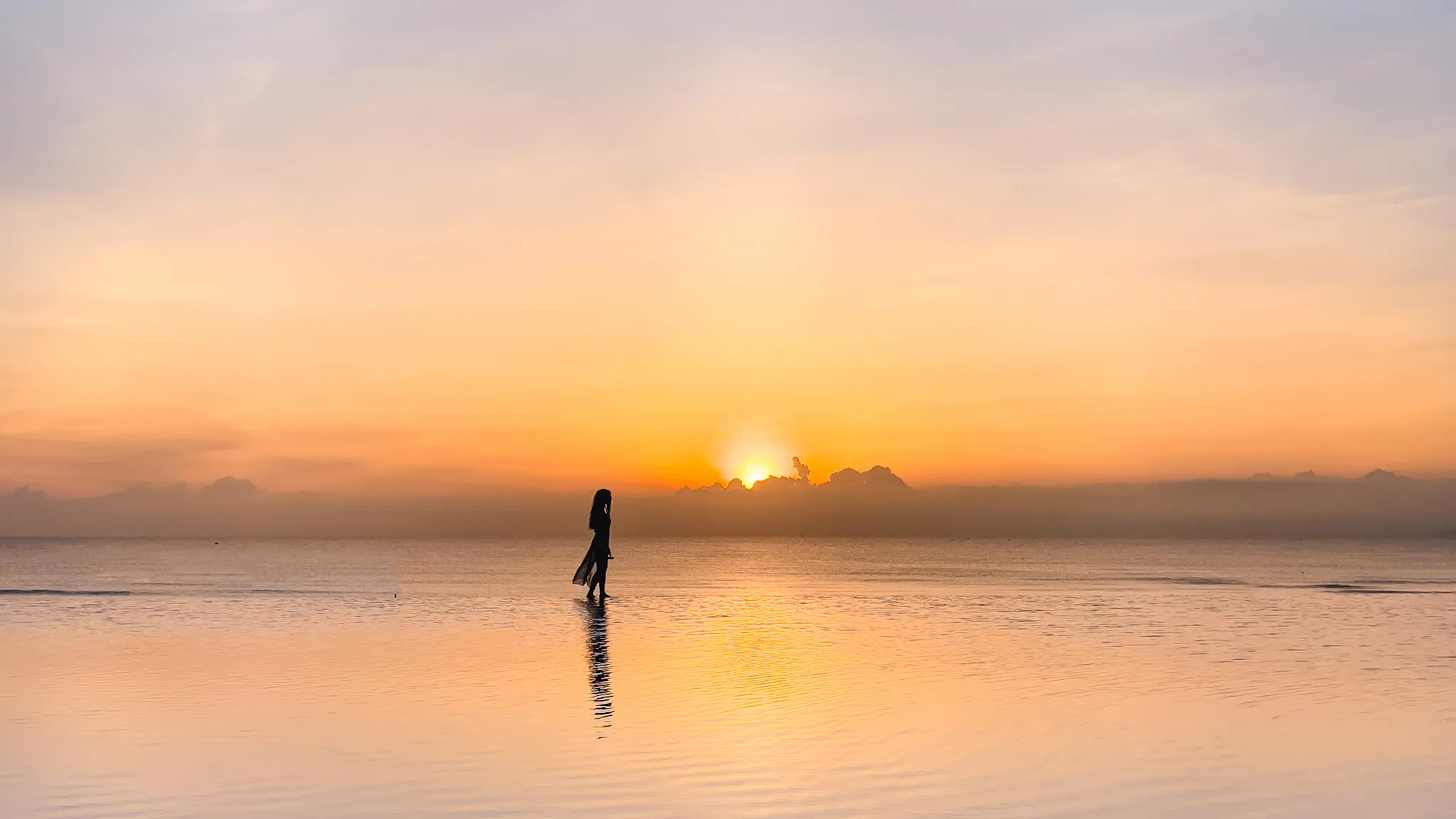
Thinking about a trip to Vietnam? That’s fantastic! But then the inevitable question pops up: should I explore the bustling streets of Northern Vietnam or the sun-kissed beaches of Southern Vietnam? Trust me, I’ve been there, staring at maps, trying to figure out how to squeeze every single incredible experience into one trip. Both regions offer vastly different, yet equally captivating, adventures. I’m here to break down the key differences, from misty mountains to vibrant markets, so you can decide which part of this amazing country calls to your wanderlust first. Ready to discover your perfect Vietnamese escape?
MENU
In this post:
The Vibe Check: Culture & Atmosphere
When you’re planning your adventure in Vietnam, one of the first things you’ll notice is how dramatically the atmosphere shifts from North to South. It’s almost like stepping into two different countries, each with its own unique heartbeat.
Northern Vietnam: History, Tradition & Vibrant Chaos
Northern Vietnam, with its capital Hanoi, feels like a deep dive into Vietnam’s soul. This is where history truly lives, from ancient temples to colonial architecture. The pace is a bit more traditional, even amidst the buzzing energy of Hanoi’s Old Quarter. You’ll find locals fiercely proud of their heritage, and the overall atmosphere is a vibrant mix of old-world charm and modern-day hustle. It can feel a bit overwhelming at first, but that’s part of its allure – you’re right in the thick of authentic Vietnamese life. I remember navigating the labyrinthine streets of Hanoi, feeling completely immersed in the sights, sounds, and smells. It’s an intoxicating experience!

Southern Vietnam: Modern, Relaxed & Beachy
Southern Vietnam, centered around Ho Chi Minh City (formerly Saigon), has a more contemporary, fast-paced vibe. It’s been more influenced by Western culture and feels generally more modern and relaxed. You’ll find sleek skyscrapers, trendy cafes, and a bustling entrepreneurial spirit. The coastal areas, like Danang and Nha Trang, offer that quintessential beach vacation feel, perfect for unwinding. I found myself easily slipping into the laid-back rhythm here, enjoying the warmth of both the climate and the people.
Landscape Love: Mountains vs. Beaches
Vietnam’s diverse geography means you’re in for a visual treat no matter which region you pick. However, the landscapes themselves tell very different stories.
Northern Highlights: Rice Terraces & Limestone Karsts
Northern Vietnam is a dramatic landscape of towering mountains and emerald-green rice terraces. Think of places like Sapa, where misty valleys reveal stunning terraced fields, or the mystical limestone karsts of Halong Bay. The region also boasts impressive waterfalls, such as the grand Ban Gioc Waterfall near the Chinese border. If you love trekking, dramatic natural scenery, and a cooler climate, the North will steal your heart.

Southern Delights: Coastal Gems & Highland Escapes
Southern Vietnam offers a more diverse palette of landscapes. You’ll find stunning golden beaches in Danang and Nha Trang, perfect for sunbathing and water sports. Venture inland, and you’ll discover the cool, pine-forested highlands of Dalat, with its charming French colonial architecture, waterfalls, and flower gardens. It’s a region that effortlessly blends coastal relaxation with mountain adventures. I loved the contrast of beach life and then escaping to the cooler mountain air of Dalat for a few days.

Adventure Awaits: Activities & Experiences
No matter which part of Vietnam you choose, you’re guaranteed an itinerary packed with exciting things to do. But the flavor of adventure differs quite a bit!
Northern Adventures
Northern Vietnam is a playground for those who love immersive cultural experiences and breathtaking natural wonders. Your must-dos include a Halong Bay cruise, exploring the mystical caves and emerald waters. I definitely recommend looking into an overnight cruise for the full experience! Then there’s the epic trekking in Sapa’s rice terraces, where you can even conquer Fansipan, the Roof of Indochina. Don’t miss a trip to the majestic Ban Gioc Waterfall and the impressive Nguom Ngao Cave nearby. For the ultimate thrill, consider the Ha Giang Motorbike Loop – an unforgettable ride through epic mountain passes. In Hanoi, immerse yourself in the culture with a cooking class or a motorbike city tour.
What I loved most about the North’s adventure:
For me, drifting through Halong Bay for three days was pure magic. The towering limestone cliffs, the hidden caves, and the emerald waters felt like sailing through another world. There’s something unreal about watching the sun set over the bay from the deck, with nothing but the sound of water lapping against the boat. Waking up surrounded by those surreal karst formations? Absolutely unforgettable!
The misty mornings in Sapa and watching the clouds roll in take a special place in my heart too. The trek through Sapa’s rice fields wasn’t just about the stunning views; it was about connecting with the local communities and experiencing their way of life. It felt authentic and truly special.

Southern Thrills
Southern Vietnam offers a mix of historical sites, relaxing beaches, and adventurous highlands. You can’t miss Ba Na Hills in Danang, with its surreal Golden Bridge, or exploring the ancient town of Hoi An, where you can even take a lantern-making class! For history buffs, a visit to My Son Sanctuary from Hoi An or a day trip to Hue Imperial City from Danang are essential. In Dalat, chase waterfalls by canyoning or enjoy a serene kayak on Tuyen Lam Lake. And of course, the vibrant coastline of Nha Trang offers fantastic island-hopping tours and scuba diving opportunities.
My thoughts on Southern activities
I absolutely loved the variety in the South. One day I was exploring the quirky Dalat Clay Tunnel, and the next I was snorkeling in crystal-clear waters near Nha Trang. It’s hard to pick a favorite, but the contrast kept me on my toes!

Feast Mode: The Food Scene
Vietnamese cuisine is universally adored, but each region adds its unique twist. Your taste buds are in for a treat, regardless of your destination!
Northern Flavors: Hearty & Traditional
Northern cuisine is all about balanced flavors, often less spicy and a bit heartier due to the colder climate. Hanoi is the birthplace of iconic dishes like pho (noodle soup) and bun cha (grilled pork with noodles). You’ll find fresh ingredients and a focus on subtle aromatics. Don’t miss a Hanoi street food tour—it’s the best way to experience the local culinary scene. Trust me, finding the best pho is a personal quest, and Hanoi definitely has some strong contenders.
Southern Bites: Sweet & Diverse
Southern Vietnamese food tends to be sweeter, spicier, and more diverse, often incorporating coconut milk and fresh herbs. Signature dishes include bánh xèo (savory pancakes) and cơm tấm (broken rice). The coastal cities like Danang and Nha Trang also offer an abundance of fresh seafood. I thoroughly enjoyed a Vietnamese cooking class in Hoi An, where I learned to make some of these delicious Southern specialties. The fresh spring rolls were a game-changer!

When to Go: Best Time to Visit
Vietnam’s long, narrow shape means its climate varies significantly from North to South. Timing your visit is crucial to make the most of your trip.
Northern Climate
The best time to visit Northern Vietnam is typically from March to May (spring) or September to November (autumn). During these months, the weather is pleasant, with comfortable temperatures and less rain, making it ideal for trekking in Sapa and cruising Halong Bay. Summers (June-August) can be very hot and humid with frequent downpours, while winters (December-February) are cool and often misty, especially in mountainous areas.
Southern Climate
Southern Vietnam enjoys a more consistently warm climate throughout the year, with two main seasons: dry and wet. The best time to visit is from December to April (dry season), when you’ll experience sunny days and low humidity, perfect for beach hopping in Danang or Nha Trang. The wet season (May-November) brings heavy, but usually short, downpours, often in the afternoon. While less ideal for constant sunshine, these months can offer lush landscapes and fewer crowds.

Travel Budget: What to Expect
One of the many reasons to love Vietnam is its affordability, especially compared to many other travel destinations. However, there are slight differences in costs between the North and South.
Northern Wallet-Friendly Tips
Northern Vietnam is generally considered slightly more budget-friendly than the South, particularly outside of Hanoi. You can easily find hostel beds for $5-10, and street food can be as cheap as $1-3 per meal. Transportation via sleeper buses or trains is also very affordable. If you’re traveling on a tight budget, the North gives you more bang for your buck.

Southern Spending
The South, especially Ho Chi Minh City and popular beach destinations like Danang and Nha Trang, can be slightly pricier, particularly for accommodation and more tourist-oriented activities. However, it’s still incredibly affordable by Western standards. You can find great value at mid-range hotels, and local food remains cheap. The infrastructure is a bit more developed, sometimes leading to slightly higher costs for convenience. Remember that hidden gem: get a VPN to unlock better hotel rates!
Why I Loved Solo Travel in Vietnam
As a solo traveler, I’m always looking for destinations that are safe, easy to navigate, and full of opportunities to meet others. Vietnam, in general, excels in this regard, but let me share my two cents on each region.
Both Northern and Southern Vietnam are incredibly welcoming to solo travelers. The extensive sleeper bus and train network makes getting around easy and affordable. You’ll find plenty of hostels that cater to solo travelers, making it effortless to meet fellow adventurers. In the North, the trekking tours in Sapa and Halong Bay cruises often involve small groups, which are perfect for striking up conversations. In the South, the relaxed beach vibes and lively social scene in places like Hoi An and Nha Trang make it easy to connect with others. Just remember to practice common sense, especially at night, and always keep an eye on your belongings. Also, for peace of mind, don’t forget to secure your travel insurance before you go!

Frequently Asked Questions About Vietnam
1. What’s the main difference between North and South Vietnam for tourists?
Northern Vietnam is known for its rich history, traditional culture, and dramatic natural landscapes like mountains and limestone karsts. It’s ideal for cultural immersion and trekking. Southern Vietnam is more modern, vibrant, and offers a mix of urban excitement, beautiful beaches, and highland retreats. It’s better for relaxation and diverse activities.
2. Is one region better for first-time visitors?
Both regions offer incredible experiences for first-timers! If you prefer a deep dive into history and stunning natural scenery, start with the North. If you’re looking for a more relaxed pace, modern amenities, and beautiful beaches, the South might be a better fit. Many travelers combine both for a comprehensive experience. I’d say start with what excites you most!
3. Can I combine both North and South Vietnam in one trip?
Absolutely! A common itinerary involves flying into one major city (like Hanoi in the North or Ho Chi Minh City in the South) and flying out of the other, with domestic flights or overnight trains connecting the regions. I recommend allocating at least 10-14 days to fully appreciate both sides of the country.
Key Takeaways 🔑
- Northern Vietnam offers rich history, traditional culture, and dramatic landscapes perfect for trekking and cruising.
- Southern Vietnam is more modern, vibrant, and features beautiful beaches, bustling cities, and cooler highlands.
- The best time to visit the North is March-May or September-November, while the South shines from December-April.
- Both regions are budget-friendly, with the North generally slightly cheaper for daily expenses.
- Vietnam is a fantastic destination for solo travelers, offering ease of navigation and plenty of opportunities to connect with others.
👉 Planning your ultimate Vietnamese adventure? Check out my complete Vietnam guide for more in-depth tips and itineraries!









